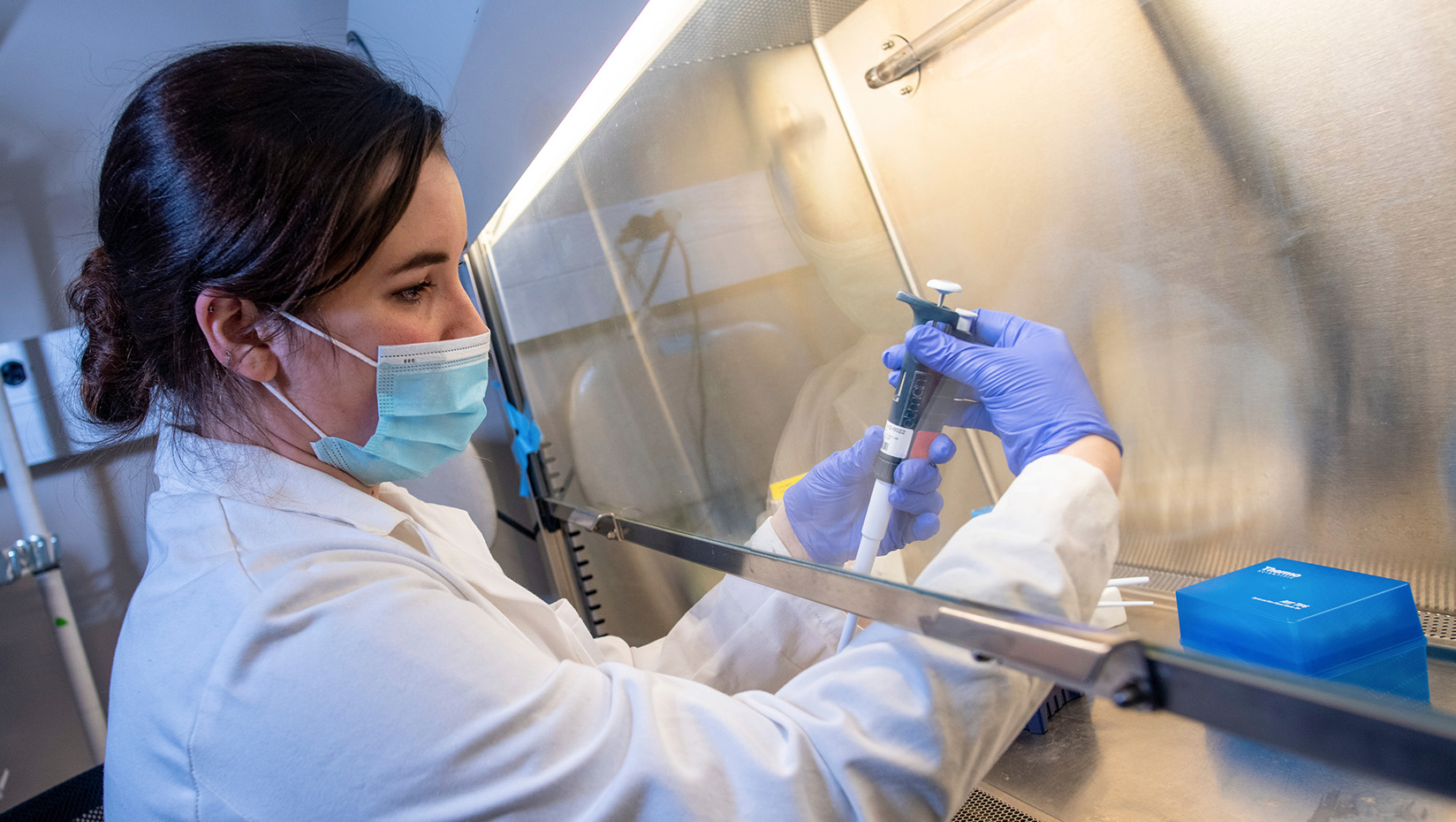
Wastewater monitoring remains central to UMS COVID-19 tracking effort
Wheeler Lab at UMaine leading robust surveillance program for four UMS campuses and two neighboring communities
Orono, Maine — The University of Maine System wastewater testing effort that began in fall 2020 and expanded to additional campuses in 2021 is in full operation as students settle back into campus life for the January–May 2022 semester.
Wastewater samples are collected twice weekly at the University of Maine in Orono, University of Maine at Fort Kent and University of Maine at Presque Isle, as well as on the University of Southern Maine Gorham campus. The wastewater testing program also analyzes samples collected at the municipal wastewater facilities in the towns of Orono and Farmington, which include contributions from the campuses located in those towns and the town populations — including any students who live off campus within the municipal sampling area.
The wastewater testing program covers 5,615 residential students for the spring semester, representing 96% of the residential population of those campuses. Results are posted at the UMS Together for Maine website.
Wastewater samples are tested for the presence of SARS-CoV-2, the virus that causes COVID-19, in UMaine associate professor of microbiology Robert Wheeler’s biosafety level 2 lab in Orono. The Wheeler Lab coordinates and conducts sample collection and lab testing for all participating sites with support from campus and municipal staff, and can typically return results in 48 hours.
“We’ve refined procedures around sampling and testing and built significant capacity in our lab over the past year,” says Wheeler, a member of the UMS Science Advisory Board. “It is exciting to see plans for a statewide expansion of wastewater monitoring for SARS-CoV-2 and increasing acknowledgment of the value of the type of data we have been collecting on our campuses since 2020.”
The System began conducting wastewater surveillance in August 2020, partnering with engineering, environmental sciences and survey firm Haley Ward (previously called CES, Inc.), for sample collection and coordination of testing with an outside lab. The Wheeler Lab conducted parallel lab testing on wastewater samples in August and September 2020 before taking over all lab analysis in October of that year. UMS now manages all aspects of the wastewater monitoring program and has conducted some level of wastewater sampling year-round since January 2021.
The wastewater surveillance plan and ongoing monitoring is overseen by the UMS Science Advisory Board, established by Chancellor Dannel Malloy to help guide the System’s safe return planning. The board is chaired by Joan Ferrini-Mundy, president of UMaine and its regional campus, the University of Maine at Machias, who also serves as the System’s vice chancellor for research and innovation.
“We’re committed to keeping our university communities among the safest places in Maine to live, learn and work, and continued wastewater monitoring is an important part of that effort,” says Malloy. “Professor Wheeler’s wastewater testing has helped us keep a close eye on the virus so that we can remain safe together.”
“As the state’s flagship and public research university, UMaine is proud to be home to a comprehensive wastewater monitoring program that supports COVID-19 tracking not only on our campuses, but also in two of our campus communities,” says Ferrini-Mundy. “The Wheeler Lab has been sampling and testing wastewater for more than a year, helping to advance the layered, science-driven planning and response efforts that have allowed us to safely deliver in-person learning experiences at UMaine and systemwide.”
About wastewater testing
Quantitative SARS-CoV-2 measurements in untreated sewage can provide information on changes in total COVID-19 infection in the contributing community. Research also suggests that increases in viral material in community wastewater occur before signs or symptoms of COVID-19. This can help to provide an early warning of an increase in the number of infected people within a specific community, including those who are infected but don’t develop symptoms. Wastewater observation works because infected people may start shedding virus in their stool a few days before they show any symptoms of disease, or even if they never show symptoms.
The Centers for Disease Control and Prevention, the U.S. Department of Health and Human Services and other agencies have initiated the National Wastewater Surveillance System to help public health officials understand the extent of COVID-19 infections in communities.
For more information about University of Maine System wastewater testing, please review our FAQs.
Contact: Ashley Forbes, ashley.forbes@maine.edu
